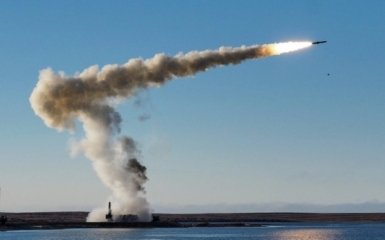Russians claimed to have repelled a missile attack near the Belbek airfield, explaining the powerful explosions in occupied Sevastopol on 15 May.
What is known about the explosions in Sevastopol
According to the occupation head of Sevastopol, Mykhail Razvozhaev, air defence was allegedly working in Sevastopol. And all emergency services were put on alert.
Russian Telegram channels also reported that traffic on the Crimean Bridge was blocked.
Later, Razvozhaev stated that the Russian anti-aircraft defence allegedly shot down 10 missiles over the water area and in the area of the Belbek airfield. Later, he reported that the rescuers allegedly extinguished the fire from falling debris in the area of the village of Polyushko.
It is also known that fragments of a downed rocket allegedly fell in the area of Fedorivska Street.
The type of downed missiles is being clarified, it is possible to detect submunitions that have not detonated. Do not approach parts of downed missiles, report such finds immediately to 112, he wrote.
Locals note that after the rocket attack, several fires broke out at the Belbek airfield, which later became more.
The monitoring group of "Crimean Wind" on satellite images notes three centers of fires at the Belbek airfield in the area of the runway and aircraft parking areas, the post says.
An hour after the end of the missile attack on the Belbek airfield, the number of fire stations in the area of aircraft parking lots increased, and the fires themselves became stronger.
Attack on the airfield Belbek: destruction of planes
On January 31, a series of explosions rang out in the temporarily occupied Crimea. The occupiers announced the alleged "launch of 20 rockets", which they allegedly managed to shoot down. In turn, the commander of the Air Force of the Armed Forces of Ukraine, Mykola Oleshchuk, hinted that the Ukrainian army hit the Belbek airfield.
At the same time, the anonymous Russian Telegram channel "Kremlyovskaya Tabakerka" initially reported the loss of two Su-27 aircraft, one Su-30 and 12 dead, including pilots, in Belbek.
On February 2, the Ukrainian air force spokesman, Yuriy Ihnat, said that at least three Russian planes and personnel were hit during the attack on January 31 at Belbek airfield in the temporarily occupied Crimea.




